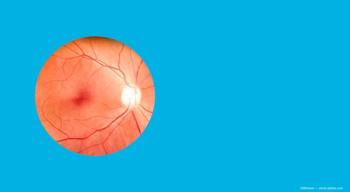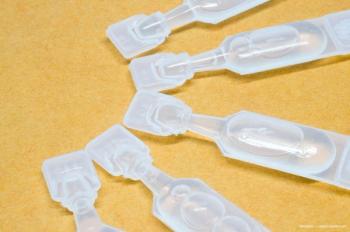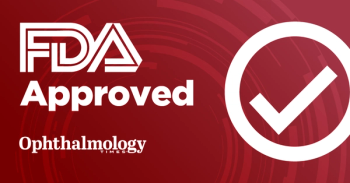
New ocular allergy drug’s MOA targets inflammation
A new, first-in-class, aldehyde-trap topical drop demonstrated rapid onset of action and sustained efficacy with an acceptable safety profile in a phase II clinical trial of patients with moderate-to-severe allergic conjunctivitis.
Reviewed by David J. Clark, MD, and Anne Marie Salapatek, PhD
Take-Home Message: A new, first-in-class, aldehyde-trap topical drop demonstrated rapid onset of action and sustained efficacy with an acceptable safety profile in a phase II clinical trial of patients with moderate-to-severe allergic conjunctivitis.
Lexington, MA-A new topical drug that counteracts the effects of moderate-to-severe allergic conjunctivitis reportedly works fast, provides a significant sustained clinical effect, and does not appear to be toxic to ocular tissues.
Visit:
This new platform (NS2, Aldeyra Therapeutics) also has a novel mechanism of action that is distinctive from anti-histamines and other medications currently used to treat allergic conjunctivitis.
“This is a new therapeutic approach for diseases characterized by inflammation or other conditions in which aldehyde metabolism is impaired,” said David Clark, MD, chief medical officer of Aldeyra Therapeutics. “It was very encouraging for us to see the substantial efficacy of this new platform in our phase IIa trial.”
Recent:
What separates NS2 from other drugs is that it is a small-molecule, aldehyde trap and is the first therapy to address allergic conjunctivitis early in the inflammatory cascade.
High levels of aldehydes are toxic and pro-inflammatory, and lead to the release of cytokines involved in histamine release and other allergic responses. Once the aldehyde is trapped, the aldehyde complex is degraded and aldehyde levels are diminished, which potentially reduces toxicity and inflammation.
Allergy or dry eye:
A potential advantage of the aldehyde-trapping approach is that it is broad-based, with potential application to a broad array of inflammatory mechanisms.
For video of mechanism,
Clinical assessment
The phase IIa study was a randomized, parallel-group, double-masked, vehicle-controlled clinical trial of the effect of NS2 in 100 men and women in whom allergic conjunctivitis was induced using a conjunctival allergen provocation test (CAPT challenge). All subjects had at least a 2-year history of allergic conjunctivitis resulting from exposure to pollen from grass, trees, or ragweed.
Related:
Dr. Clark reported that NS2 has a rapid onset of action, with positive effects visible within a few minutes of drug administration. Compared with the vehicle, the investigators saw significant differences (p < 0.05 for both comparisons) in ocular itching and tearing after NS2 treatment. Importantly, the effect of the drug over baseline symptoms was sustained for over 3 hours following the challenge.
Dr. Clark noted that the effect persisted across all time points for all challenges despite a stronger than expected effect of the vehicle.
Related:
The subjects were treated with NS2 or vehicle QID for 16 days. CAPT challenges were performed on dosing days 1, 14, 15, and 16. The ocular itching and tearing were assessed on scales of 0 (indicating no symptoms) to 4 (indicating extreme symptoms).
No safety concerns were noted during the trial and the patients tolerated the drug well. The only adverse effect was transient and generally mild stinging. Two patients dropped out of the study.
Some future considerations
The evidence from the study showed that the drug works acutely in patients with allergic conjunctivitis. However, a question remains about when the therapy can be used prophylactically in patients prone to allergic conjunctivitis.
Recent:
Dr. Clark pointed out that prophylactic use is preferred for this patient population, but no decision has been made about a treatment program for clinical practice.
Anne Marie Salapatek, PhD, president and chief scientific officer, Inflamax Research, a contract research organization that conducted the study, commented that the data seem to show that patients could safely use the drug continuously during seasons when they are particularly susceptible to allergic events. Dr. Salapatek added that formal dosing schedules still remain to be investigated.
Related:
Some anti-histamine-refractory patients are treated chronically with topical corticosteroids, which could lead to complications of increased intraocular pressure and steroid-induced glaucoma.
“The potential for this drug to be used over the long term is very exciting when considering the possibility of eliminating some side effects associated with corticosteroids,” Dr. Salapatek said. “NS2 might fill an unmet need for these patients.”
Related:
Aldeyra Therapeutics plans to issue guidance on the clinical development plan of topical ocular NS2 during the second quarter of 2016.
Other potential indications
To view video of how NS2 works,
Topical dermatologic NS2 is also being tested in a phase II clinical trial in patients with Sjögren-Larsson Syndrome (SLS), an inborn error of aldehyde metabolism with severe skin and neurological complications. Some SLS patients also suffer from retinal disease.
More:
David Clark, MD
Dr. Clark is an employee of Aldeyra Therapeutics.
Anne Marie Salapatek, PhD
Dr. Salapatek is an employee of Inflamax Research.
Newsletter
Don’t miss out—get Ophthalmology Times updates on the latest clinical advancements and expert interviews, straight to your inbox.



















































.png)


